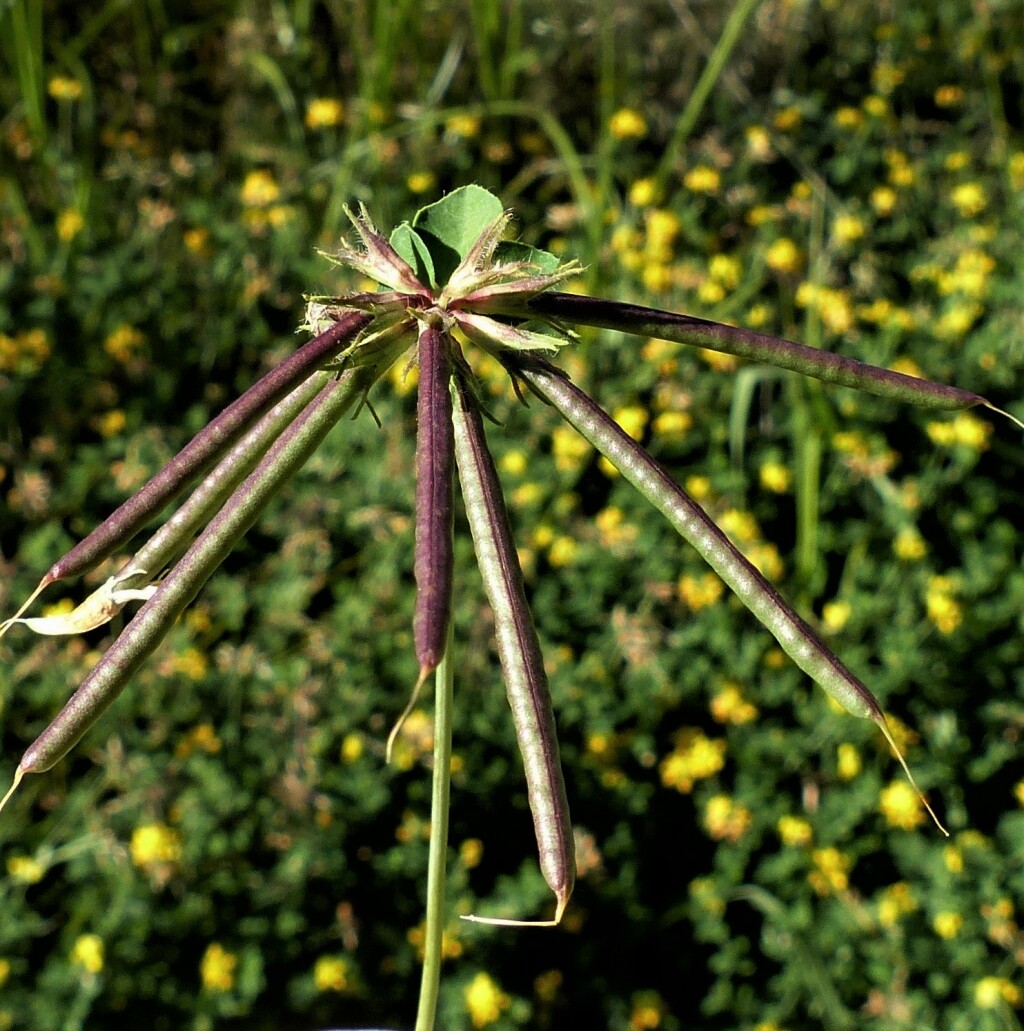Lotus uliginosus
Schkuhr Greater Bird's-foot TrefoilProstrate or ascending perennial herb; stems to 80 cm long, with sparse spreading hairs. Leaflets dimorphic, sparsely pilose; basal 2 ovate, 8–12 mm long, 2–9 mm wide, apices acute; terminal 3 obovate, 4–25 mm long, 3–15 mm wide, apices usually obtuse. Inflorescences mostly 8–14-flowered; peduncle 3–12 cm long; calyx campanulate, 5–7 mm long, sparsely pilose, teeth spreading with upper 2 separated by an acute sinus in bud, about equal, shorter than or as long as tube; corolla 10–12 mm long, yellow with red veins; standard obovate to orbicular, equal to keel; keel strongly upturned, obtusely bent on lower edge at base, beak long and straight, shiny. Pod terete, 1.5–3.5 cm long, 1.5–2 mm wide, glabrous; seeds 8–20, subglobose, ovoid or reniform, c. 1 mm long, brown, shiny. Flowers Nov.–Feb.
GleP, Brid, VVP, VRiv, MuF, GipP, OtP, WaP, Gold, CVU, GGr, DunT, NIS, EGL, EGU, WPro, HSF, HNF, OtR, Strz, MonT, VAlp. Also naturalised WA, SA, NSW, ACT, Tas. Native to Europe, northern Africa. Scattered widely through higher rainfall parts of Victoria, mostly in pastures on poorly drained soils.
Jeanes, J.A. (1996). Fabaceae. In: Walsh, N.G.; Entwisle, T.J., Flora of Victoria Vol. 3, Dicotyledons Winteraceae to Myrtaceae, pp. 663–829. Inkata Press, Melbourne.
 Spinning
Spinning


